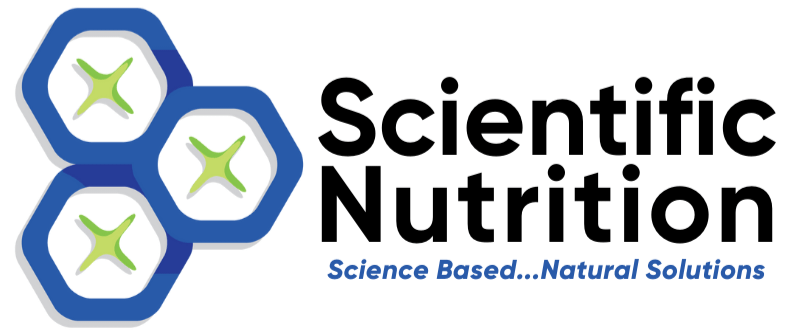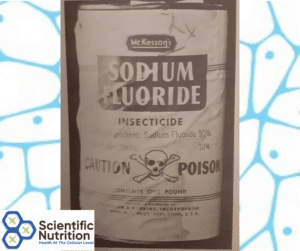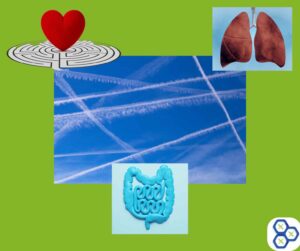How Everyday Toxic Products Affect Your Health & Hormones?
Toxic products are everywhere. The biggest sources of toxicity may be the personal care products you use daily such as deodorant, hair products, cosmetics, fragrances, and even your toothpaste.
It shocked me to see over 200 toxic ingredients are used in commercial products which can disrupt your hormone levels, cause health symptoms, and are even cancer-causing.
In my Health For Life™ program, I analyze 25 of my clients’ most frequently used items to point out how many times they are exposed to potentially dangerous chemicals that can be listed under 6-20 different names each! I research them all to help you make important changes for your long-term health.
12 Dangerous Chemicals to Avoid in Personal Care Products for Healthier Skin
The following contains some of the worst chemicals in your cosmetic and personal care toxic products:
Formaldehyde: The Carcinogenic Chemical Hiding in Your Beauty Products
Formaldehyde is a carcinogenic gas found in synthetics and preservatives. Scientists have known formaldehyde as a carcinogen since 1980. Sadly formaldehyde is used in nail polish, shampoo, deodorant, and hair products like dyes, relaxers, and straighteners.
Triclosan: The Carcinogenic Chemical Hiding in Your Beauty Products
Triclosan is a strong chemical that reduces bacterial contamination. In late 2017, it was banned from antibacterial soap by the FDA for failing to prove it was safe. Sadly, it was not banned from personal care products such as face wash/wipes, moisturizing creams, deodorant, hand sanitizers, facial tissues, toothpaste, mouthwash, shaving gel, and some cosmetics.
Triclosan is often contaminated with chloroform and dioxins that are linked to endocrine disruptions, allergic reactions, organ toxicity, escalated risk, exacerbated asthma symptoms, eczema, and skin/eye/lung irritations. It also accumulates within the body! The CDC found that out of 2,517 people, 75% of them showed triclosan in their urine. It has been banned in Europe and Canada since 2010.
Dimethicone: The Toxic Silicone in Cosmetics That Can Block Pores
Dimethicone is a toxic cosmetic ingredient that is a polymer acting as a thickener, emollient, styling agent, and conditioner in cosmetics. It is a synthetic silicone that adds softness or smoothness to the skin but also silly putty, caulk, kinetic sand, adhesives, aquarium sealants, and Rain-X car protectants. This soft feeling can block the skin’s pores, locking in the toxins.
Personal care products include sunscreens, body moisturizers, anti-aging products, lotions, hair care, facial serums, and moisturizer. Ironically acne products contain it even though these polymers can create acne by blocking pores encouraging bacteria to grow in the toxins resulting in pustules.
Parabens: Hormone Disruptors in Your Cosmetics and Skincare
Forms of parabens can be one of the most toxic cosmetic ingredients out there. Acting as a preservative (like formaldehyde), this chemical kills bacteria in cosmetic products, but they have been put in the category of carcinogenic with links to breast cancer. They are hormone disruptors that mimic estrogen in the body, damage DNA, irritate the skin, and may lead to fertility issues or congenital disabilities in babies.
They are commonly in use within hair care, body wash, skincare products, and heavily in sunscreens. You need to look for variations of the name. Many companies are now marketing the fact that this chemical has been removed stating “Paraben Free”.
Coal Tar in Cosmetics: The Carcinogen You Didn’t Know You Were Using
If coal tar sounds like an ingredient that should not be within your home — you’re right! Coal tar is a compound made up of hydrocarbons, carbon, and water. According to the American Cancer Society, coal tar is a known carcinogen.
Unlike the thick, black liquid tar you think of, coal tar brightens and saturates the color of lipsticks and eye shadows. The bright color can have a toxic effect on the skin as it’s extremely heavy and leads to allergic reactions as well as skin breakouts.
Methylisothiazolinone (MIT): The Preservative Linked to Allergies and Health Risks
MIT is another synthetic preservative like paraben to extend a product’s shelf-life. Sadly, there are NO studies at MIT to test for the toxicity of these accumulated chemicals after years or decades of application. Paid scientists have found that low levels of MIT were “safe in cosmetics”. In 2010 clinical data from the Cosmetic Ingredient Review showed a large number of the population experiences adverse or allergic reactions to MIT.
This chemical has links to health risks to fetuses, allergic reactions, and neurotoxin issues. You will frequently find them in water-based cosmetics, hair care, body wash, skincare, and sunscreen. Check products closely when the label says “paraben-free” for MIT.
Petroleum-Based Products: The Toxic Ingredients in Common Moisturizers
This is one of the cheapest lubricants or emollients manufacturers can use. Its petro-ingredients are very often full of contaminants with impurities that are irritating to the skin, causing acne or even cancers. Due to its inexpensive yet versatile use, it is in a lot of beauty and cosmetic products. Europe requires historic proof of full refining to allow it in products. They also play a role in damaging your reproductive system.
1,4 Dioxane: The Hidden Carcinogen in Your Cosmetics
1,4 dioxane is a carcinogenic, processed petroleum-based ingredient that can be in approximately 46% of cosmetics! It is often a byproduct chemical of other chemical ingredients. This gives it the ability to NOT be listed on the ingredient label and not even required.
1,4 Dioxane is toxic to the central nervous system, heart, blood, liver, kidneys, immune system, brain, skin, and digestive system. It can be in products such as shampoos, face washes, and liquid baby bath soaps.
This chemical is the leading cause of groundwater contamination and the Environmental Working Group has found it is in 22% of all products in some form and at unsafe levels.
Phthalates: The Toxic Chemicals in Cosmetics That Affect Your Health
Phthalates can be found in many toxic cosmetics which may include nail polish, lipstick, hair spray, and skincare products containing plasticizers called phthalates. It can list it as “Fragrance”. The chemical makes the products more flexible, soft, malleable, and spreadable and improves their ability to bond to surfaces smoothly.
Phthalates have been known to cause:
- headaches
- dizziness
- asthma
- hyperpigmentation
- hormonal disruptions
- ADHD
- diabetes
- reproductive issues
An epidemiology study done in 2016 found that 31% of pregnancies exposed to phthalates resulted in pregnancy loss.
The term fragrance can contain thousands of different chemicals and combinations with one or multiple forms of phthalates. It is often listed as a fragrance, parfum, or scent. The manufacturers hide behind the danger by legally labeling them as “fragrance” often so beware.
Laureth Sulfate and Sodium Lauryl: Harmful Chemicals in Your Everyday Products
Laureth Sulfate and Sodium Lauryl or SLS), which are surfactants make products foamy like face wash, hand soaps, face masks, shampoo, toothpaste, body wash, baby bath products, and detergents. These chemicals dry out the skin by removing natural oils from your pores. If you ever had to hand wash at work or a business with foaming soaps you will know how dry your hands will become quickly.
Often these chemicals will cause redness, irritation, and possible long-term issues. Foaming face washes are commonly an issue with these symptoms. This may seem to be an external issue for the surface of your skin but once they soak into the body they are harmful to the necessary enzymes that work to maintain your health leading to silent toxicity.
DEA, TEA, and MEA: Toxic Emulsifiers in Personal Care Products
These three are the ones to avoid. Diethanolamine (DEA), triethanolamine (TEA), and monoethanolamine (MEA). They are petroleum-made, foaming emulsifiers that prevent the ingredients from separating like oil and water. They are a part of ammonia compounds called ethanolamines. These three are often within hair dye, soap, shampoos, bubble baths, makeup, and cleansers.
There is a ban entirely in Europe as studies show ethanolamines have a link to cancer, organ, and neural system toxicity, allergic reactions, skin damage, inflammation, and irritation.
Heavy Metals in Cosmetics: How Metalloestrogens Affect Your Health
Many products contain heavy metals called metalloestrogen which include arsenic, mercury, iron, chromium, nickel, copper, zinc, aluminum, and lead. These are the metals we are looking for in your hair analysis results.
They are in products such as:
- hand lotions/creams
- cosmetic products such as lip gloss
- moisturizers
- concealers
- eye shadow
- whitening toothpaste
- eyeliner
- foundations
- blush
- eye drops
- nail polish
- sunscreens
One example is aluminum which is put in to block sweat in antiperspirants or skin-lightening products. It can significantly affect your cognitive function with accumulation as found in Alzheimer’s patients and breast cancer. When these metals are stuck in tissue (including your organs or brain) they can not be eliminated easily and can accumulate to cause disease, symptoms, and illnesses.
There are too many symptoms beyond neuro-degenerative disease, lung cancer, skin irritation, etc. to mention here. Again, these ingredients are illegal in Europe, Canada, and Japan yet the U.S. rarely regulates heavy metals in cosmetics.
Hair Analysis and Your Skin: The Key Barrier Against Toxic Products
Your skin is your largest elimination organ and a very important part of your immune system. Just because a product says natural doesn’t mean it may not have harmful additives in it so read your labels.
If you would like assistance in identifying how many exposures you are subjecting yourself to, how to change your products and detox your products along with your body.
LET’S CHAT about your health goals today!
Learn how to identify more products containing toxins so you can eliminate even more sources!
Copyright Scientific Nutrition, LLC 2021




